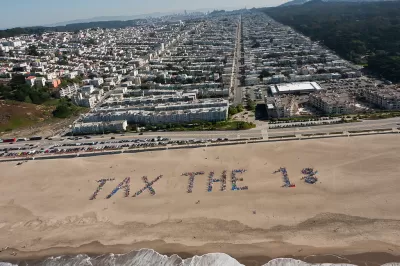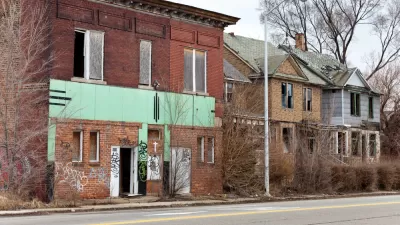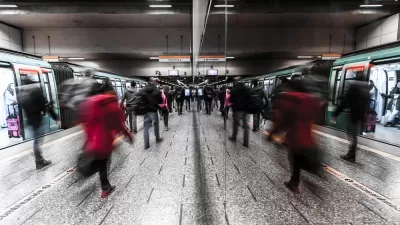While the vast majority of cities saw an increase—or no decrease—in neighborhood inequality since 1990, nearly 30 regions became more equal. But paper equality can be problematic when the rich simply up and left town.

The Urban Institute's Rolf Pendall discusses results from his recent study of neighborhood inequality rates between 1990 and 2010. As one might guess, most regions fared poorly. "But there are exceptions to every rule: in 29 of the nation's 214 commuting zones (CZs) with over 250,000 residents, neighborhood inequality went down from 1990 to 2010."
However, only in some areas did incomes actually rise across the board. "In 21 CZs, inequality fell because of shared growth, with income rising significantly in both top and bottom neighborhoods. [...] In eight CZs, inequality dropped because economic restructuring undermined the regional economies to such an extent that middle- and upper-income households either left town, retired, or took pay cuts."
Self-segregation by the rich results in segregated poverty, and, perversely, regional equality. Pendall says we need more diverse metrics to evaluate economic outcomes. He asks, "Do places and nations prevent or reduce material hardship? Do they foster economic mobility over the life course and generations? Do they assure the economic security of people who are just getting by and resilience for those whose lives are disrupted?"
FULL STORY: Is falling inequality always a good thing?

Study: Maui’s Plan to Convert Vacation Rentals to Long-Term Housing Could Cause Nearly $1 Billion Economic Loss
The plan would reduce visitor accommodation by 25,% resulting in 1,900 jobs lost.

Alabama: Trump Terminates Settlements for Black Communities Harmed By Raw Sewage
Trump deemed the landmark civil rights agreement “illegal DEI and environmental justice policy.”

Why Should We Subsidize Public Transportation?
Many public transit agencies face financial stress due to rising costs, declining fare revenue, and declining subsidies. Transit advocates must provide a strong business case for increasing public transit funding.

Paris Bike Boom Leads to Steep Drop in Air Pollution
The French city’s air quality has improved dramatically in the past 20 years, coinciding with a growth in cycling.

Why Housing Costs More to Build in California Than in Texas
Hard costs like labor and materials combined with ‘soft’ costs such as permitting make building in the San Francisco Bay Area almost three times as costly as in Texas cities.

San Diego County Sees a Rise in Urban Coyotes
San Diego County experiences a rise in urban coyotes, as sightings become prevalent throughout its urban neighbourhoods and surrounding areas.
Urban Design for Planners 1: Software Tools
This six-course series explores essential urban design concepts using open source software and equips planners with the tools they need to participate fully in the urban design process.
Planning for Universal Design
Learn the tools for implementing Universal Design in planning regulations.
Smith Gee Studio
Alamo Area Metropolitan Planning Organization
City of Santa Clarita
Institute for Housing and Urban Development Studies (IHS)
City of Grandview
Harvard GSD Executive Education
Toledo-Lucas County Plan Commissions
Salt Lake City
NYU Wagner Graduate School of Public Service




























